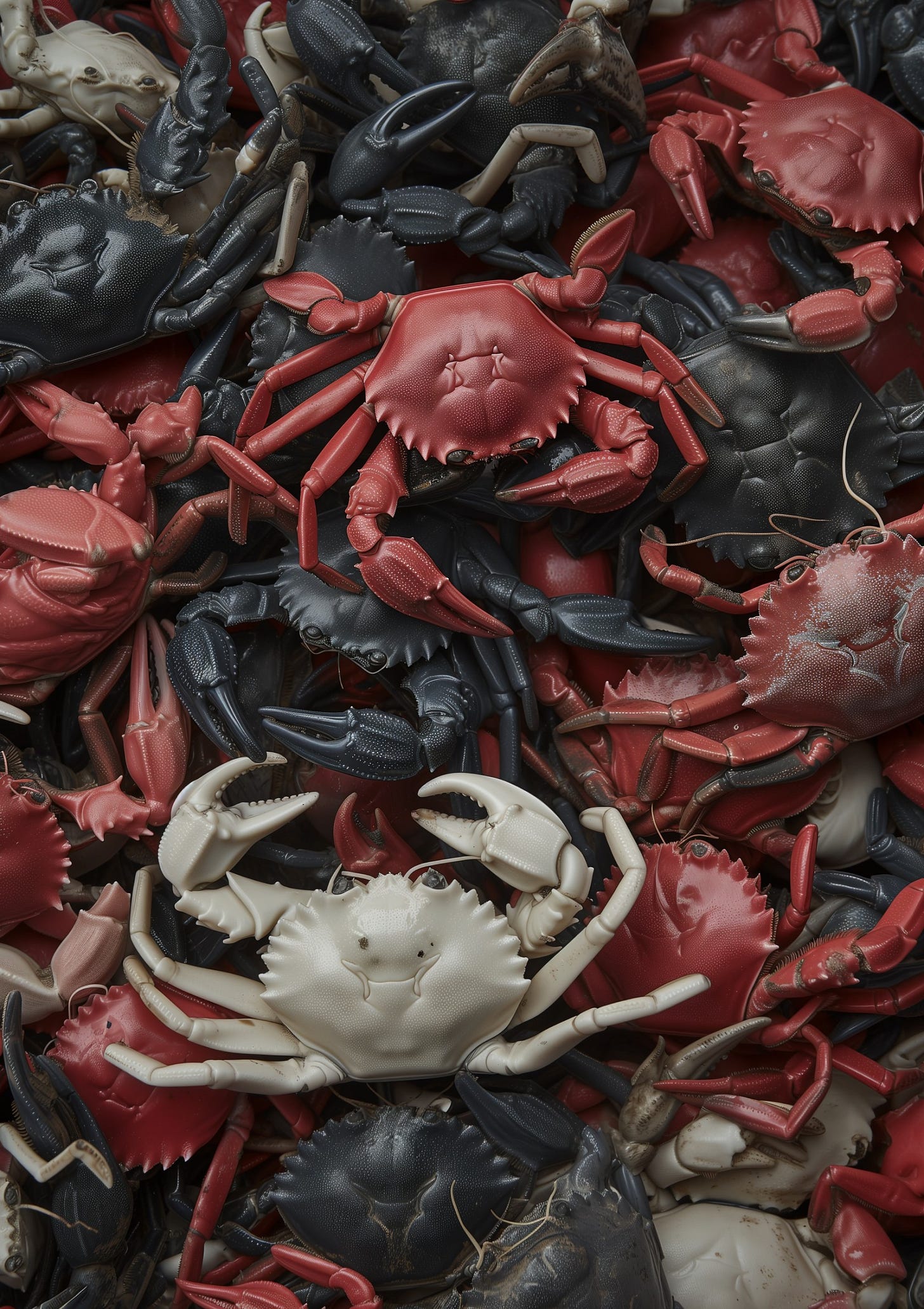you can’t buy taste. but you can manufacture scarcity.
When Everyone Has Taste, Scarcity Becomes the Shortcut
Let’s get this out of the way: taste is no longer exclusive. Everyone has it now. Or at least, everyone can look like they do. The internet flattened the hierarchy. Pinterest taught the algorithm how to do color theory. TikTok made 16-year-olds fluent in design language. Canva gave everyone a graphic design degree.
But what happens when taste becomes democratized? When every brand has good art direction and every product is curated? We manufacture scarcity. Not because it guarantees quality—but because it buys back mystique.
Scarcity isn’t just a symptom of demand anymore. It’s the product.
scarcity ≠ taste. but it’s a damn good disguise
Back in 1979, Pierre Bourdieu wrote about taste as a form of symbolic power. Cultural capital was gate-kept through etiquette, knowledge, and aesthetic “distance” from necessity. Today, those signals have been rerouted. You don’t need to be born into a legacy family or go to RISD to have taste. You just need the right filter, drop link, or Discord plug.
So what do brands do in a world where everyone is fluent in aesthetic codes? They create friction.
Enter: waitlists, raffles, “1 of 50,” drops, early access, offline-only events. Taste isn’t disappearing. It’s being displaced—into process. Into access. Into experience bottlenecks. As Ana Andjelic argues in The Business of Aspiration, “aspiration is no longer about price, but participation.” It’s not what you own—it’s how you got it.
the drop era: culture as a countdown
From Supreme to MSCHF, scarcity has become a script. The drop doesn’t just generate revenue—it creates urgency theater. A choreographed moment of collective anticipation. Even rejection becomes part of the brand experience (you didn’t get the drop? Well, that means something).
These moments act as compression rituals. They fold identity, status, and desire into a timestamped window. Culture becomes live. And you either catch it—or you scroll past it and pretend you didn’t want it anyway.
the compression effect: scarcity as signal
a couple weeks ago, i wrote about the compression effect: scarcity as signal—how, in the compression zone (where street culture meets luxury curation), scarcity becomes a translator. it turns raw creativity into status objects.
Andjelic calls this the “aestheticization of access.” It’s why an $18 smoothie at Erewhon hits differently than one at the local co-op. It’s not what’s in it. It’s what isn’t in reach. The illusion of exclusivity becomes the brand.
Compression collapses the distance between niche and mass. Scarcity restores it.
quiet luxury, loud access
Luxury used to mean expensive. Now it means rare.
The price tag doesn’t matter if everyone can buy it. The real flex is being early. Being in-the-know. Being seen—but not understood.
You see it in the coded minimalism of Loro Piana and The Row. You see it in the “if you know, you know” drops by brands like Telfar, where scarcity is deliberately inverted into access lotteries. In both cases, scarcity performs taste—even when the product is accessible.
This is what Zwick and Cayla (2021) call “unbranded branding.” Taste is no longer shown. It’s implied. Protected by scarcity. Sanitized by invisibility.
why brands manufacture scarcity (even when they don’t need to)
The economics are simple. In the compression era, volume dilutes value. Attention is cheap. Reach is everywhere. But friction? That’s expensive. That’s premium.
Scarcity creates tension. It forces a decision.
It’s the last reliable tool brands have to create meaning in a world where everyone looks like a brand and everything looks designed.
It’s not a constraint. It’s a choice.
the scarcity playbook (and its risks)
Let’s be honest—scarcity works.
But it also creates fragility.
Brands that rely too heavily on manufactured scarcity risk becoming performative. And when the drop becomes the entire identity, there’s nothing left when the hype fades. Ana Andjelic warns of this in Hitmakers: brands must build resonance, not just rituals. Scarcity should be a strategy, not a crutch.
We’re in a cultural moment where aesthetics are fast, taste is flattened, and identity is remixable. In that mess, scarcity offers structure. It separates. It signals. It slows things down just enough for people to care.
But here’s the real question:
What happens when scarcity itself becomes abundant?
You can’t buy taste.
But in the compression economy, you can still sell the idea of it.
For now
.
references
Andjelic, A. (2021). The Business of Aspiration. Google Books
Andjelic, A. (2024). Hitmakers: How Brands Create Cultural Relevance. Google Books
Bourdieu, P. (1984). Distinction: A Social Critique of the Judgement of Taste.
Cialdini, R. (2009). Influence: The Psychology of Persuasion (Chapter on Scarcity).
Banet-Weiser, S. (2012). Authentic™: The Politics of Ambivalence in a Brand Culture.
Zwick, D., & Cayla, J. (2021). Branding without Brands: The Rise of Unbranded Luxury. Journal of Consumer Research.







what a joy it is to read your words Rama! I recently needed a pair of sneakers and I fell into this scarcity / taste trap - the more I saw the model sold out in stores online the more I wanted it. And the worst part is I know brands do it by design but it still drove me crazy that I *couldnt* get a pair.
just here for the crabs 🦀🦀🦀